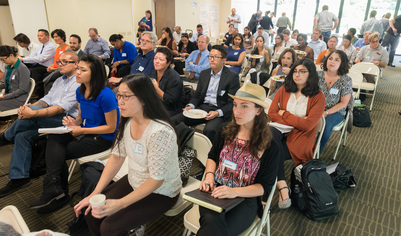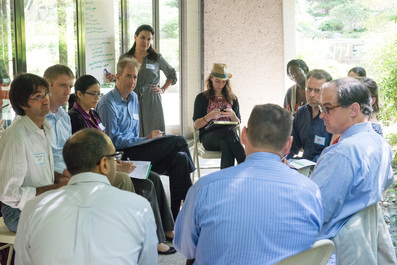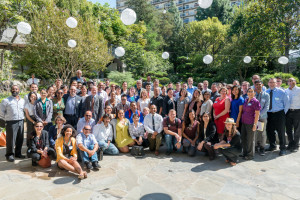As one of the leaders of the SB 535 Coalition, along with the Asian Pacific Environmental Network (APEN), The Greenlining Institute, and Public Advocates, we organized the first annual statewide convening in Los Angeles last week to gather insights from the first year of SB 535 (de León, 2012) investments and prioritize advocacy for the next fiscal year. Almost 100 advocates from organizations and community-based groups from across the state attended the convening, “Leading with Equity: Evaluating and Advancing California’s Climate Investments.”

We started the convening by learning about the history of how SB 535 came about, which was many years in the making. We also got to hear about the lay of the land in Sacramento and the landscape of the Greenhouse Gas Reduction Fund (GGRF) where the auction proceeds are deposited. We discussed the importance of advocating during the state budget process to ensure that disadvantaged communities get an equitable share of the state’s climate investments. Another important piece in the implementation of SB 535 is the Air Resources Board’s funding guidelines for agencies that administer the GGRF investments. During the convening, we discussed how most of our suggestions and asks made it into revised version of these guidelines.
We also heard about various exciting and very informational research reports from the UCLA Luskin Center for Innovation, the Liberty Hill Foundation, the Greenlining Institute and APEN that evaluated the first year of investments. These reports gave us a snapshot of what happened this year – which will help inform our advocacy for next year – and they all made it very clear that benefits are happening and investments are being made in disadvantaged communities. Change is happening in these communities.
A key aspect of the convening was the space that was provided for advocates to have focused discussions on key priority program areas that the SB 535 Coalition has been focusing on this past year: energy/low-income weatherization program, low carbon transit operations, affordable housing near transit, urban forestry, and low carbon transportation/clean freight. We were joined by staff from the different implementing agencies during these discussions. We evaluated the strengths of these programs, and also identified the priority changes and improvements that these programs need in order to be more successful in the future.

Some priorities resonated across many of the program areas. One of them was the need for authentic community engagement in the public process, both in the concept and full proposal phases of project applications. Another shared priority was the need for more transparency from agencies in regards to the information they post on their websites, and how they also need to share information in other ways besides online platforms to address the digital divide that some communities face. We also heard specific priorities for some programs, such as the need to better quantify co-benefits in the energy programs, and the need for stronger anti-displacement measures for the Affordable Housing and Sustainable Communities program. For the Low Carbon Transportation Program, there’s a desire from advocates to have charging synergies between this program and the housing program.
We thank everyone who joined us during the first annual SB 535 Coalition Convening and made it a huge success. It was an integral step in our continuing efforts to influence the implementation of SB 535 in the upcoming year. We look forward to working together to ensure that the communities that are hit first and worst by air pollution and climate change benefit from the state’s Climate Investments.
[share title=”Share This Post”]








